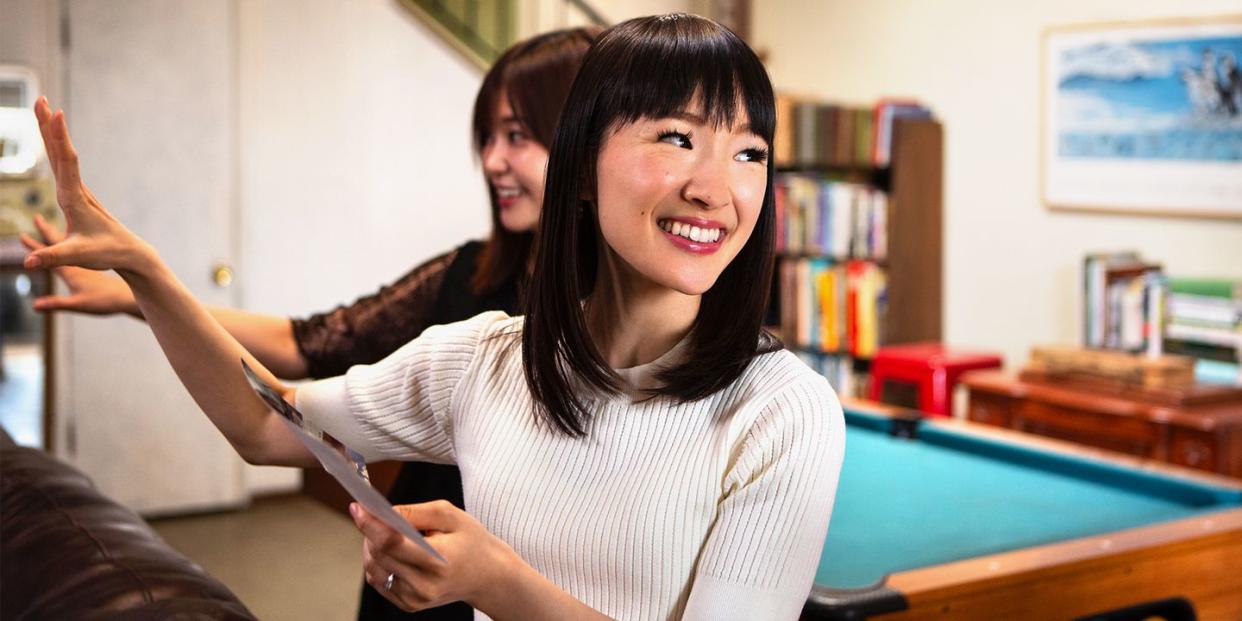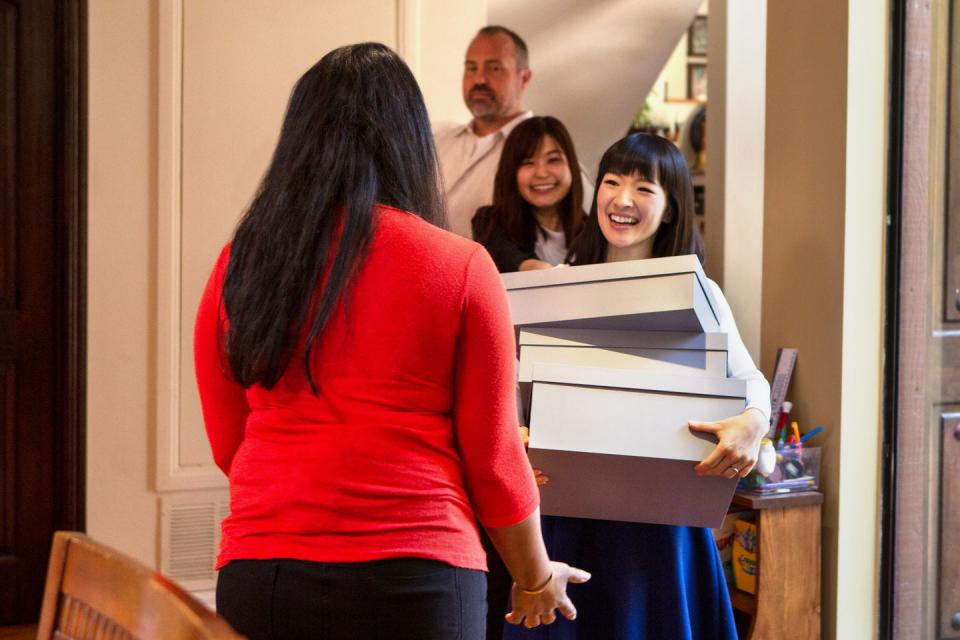This Is What the KonMari Method Actually Is, And How You Can Adopt It

The start of a new year is a perfectly good reason for a massive home clean-out, but the Jan. 1 release of Tidying Up With Marie Kondo on Netflix seems to have effectively inspired the general public to get on board with the Japanese organization guru's KonMari Method. Since the show's launch, CNN reports that thrift stores and secondhand shops are seeing a significant increase in donations during this usually slow time of year, no doubt due to the show's upbeat tone and universally applicable tidying tips.
Though the show is brand new, the KonMari Method has loomed large in the American consciousness since 2014, when the English translation of Marie Kondo's book, The Life-Changing Magic of Tidying Up, was published. At the present time of publication, her book is currently the second highest-selling book on Amazon's Best-Sellers book list, behind only Michelle Obama's memoir, Becoming. Shop her book below, and read on for the lessons I've learned from the KonMari Method.
The KonMari Method is a decluttering process that operates on the main criteria that every object you own should "spark joy." It covers five main categories:
Clothing
Books
Papers
Komono (miscellaneous items)
Sentimental items
Each category should be sorted individually, and should encompass the entire home at once, not just one room at a time. In her book and in the show, Kondo puts equal weight in both the decluttering and storing process - requiring that one's most-used items are accessible and neatly stowed (or flawlessly folded).
In watching the eight episodes of Tidying Up With Marie Kondo on Netflix, I was struck by several common themes that seemed to pervade each one. As Kondo imparted her organizing wisdom to the various Los Angeles-based families and couples, I found it so interesting to see her method being put into action, and to see which categories different households struggled with. Here are the lessons that I gleaned from the show, beyond the KonMari Method's most basic tenets.
You have much more space than you think.
Many of the households featured in the show were multilevel homes, complete with a basement and garage. Yet, the families were struggling to find everyday items and places to easily access things, while old, unused, or an excess of unnecessary items were taking up valuable closet and drawer space. The couple in episode five even discovered that they had a total of 26 coffee mugs in their main kitchen cabinet alone!
While house size widely varies across the the country, American homes on average have double the square footage as Japanese homes, so it's not a lack of space that's causing the clutter to build up. Learning how to identify which items actually matter to us, and how to intelligently stow them, can help curtail a persistent accumulation problem.

We should be greeting our homes more often.
In every episode, shortly after greeting the family, Kondo would also "greet the home." This meant finding a spot to kneel on the floor to close her eyes and meditate for a few moments. It was interesting seeing the American families respond to Kondo doing this - some would reverently meditate alongside her, some would watch her curiously, and others would hold hands and sit silently. In the first episode, The Friends, a husband-and-wife couple, became emotional after this greeting, saying that they had never expressed gratitude for a home that had been so good to them. Instead of charging into home-tidying with exasperation and resentment, approaching it with gratitude can help foster long-term happiness in your partnership and in your living space.
Out of sight isn't out of mind.
Many of the homes on the show did not appear to be out-of-control cluttered. Even Kondo would remark on a house's cleanliness upon first entry! But what would seem like a neat room at first glance would also have a mess of clutter hidden in every drawer, closet, and cabinet. Closet and inner-drawer storage are key components of completing the KonMari Method successfully, and also the reason why storage boxes are Kondo's only organization product that she's ever created (though they are now sold out). In her book, Kondo writes that shoebox-sized boxes are frequently reused in Japan as closet storage, and even the lids can be repurposed to corral items inside of drawers. It's a small change, but incredibly effective, as it keeps small items from getting easily lost.
Decluttering and tidying should be a family effort.
After several episodes, it became apparent that one of the effects of a whole family using the KonMari Method was that household work would be equalized, instead of falling to one person. In the first and third episodes, the mother of the family households would confess to feeling guilty for their home's seemingly endless clutter, while trying to juggle the other aspects of their lives. This imbalance of chores in American families isn't uncommon, so a concerted family effort to declutter, clean, fold, and store items around around the house can help to normalize the sight of all members of the household contributing to chore time, especially with very young children at home.
Sorting and storing is an act of mindfulness.
"Does it spark joy?" can be a really complicated question. Sehnita, the mother in episode six hoping to declutter her family's home in anticipation of having a third child, seriously grappled with which items from her own closet and from her children's toy chest she was comfortable parting with. The answer to this question of joy isn't always an easy one, but the process of questioning an object's purpose in your life can offer some much-needed soul-searching. When the whole family is a part of that journey, as the show demonstrates, it can be powerfully transformative.
Read More:
Must-Have Items to Organize Your Entire Life
Underbed Storage Is the Trick for Staying Sane in a Small Space
Garage Storage Ideas That Don't Let Any Space Go to Waste
('You Might Also Like',)

